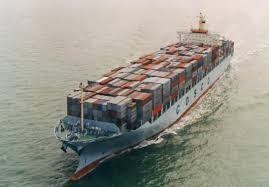Transportation is one of the most important steps in Supply chain management (SCM); especially in International business and due to Iran’s geographical location- middle east- Iran has been playing a key role in that matter. Having Caspian in the north, Persian Gulf and Oman Sea in the south, as well as being located in the Heart of Silk road, makes Iran one of the most strategic countries in transportation industry.
Roads
Once a history, Silk-road is now what China is investing in, which will increase the amount of trade between China, and Iran, and the countries, in Europe. The first shot at this, was a 32-container train from Wuyi, China that arrived in Tehran, Iran about a year ago in June 2016, which shortened the typical ship-based travel time by 30 days.
Iran has also a wide range of Roads, covering a distance of 180,958 kilometers, with 15,000 kilometers of paved highways and freeways.
Road Type |
Covering Distance |
Freeway |
1900 KM |
Highway |
~13,000 KM |
Other paved ways |
~112,000 KM |
Unpaved ways |
47,000 KM |
Yearly about 12 million Tons of Goods are transported through Iran, only by roads.
As road transport is still the default transportation method in Iran, the government is aiming to step up investment levels in both public transport and its road network. Updates to roads across the nation will provide international trucking firms with many new routes to explore. And, given Iran’s favourable geographic location, this could provide a highly lucrative revenue stream for transport and logistics firms.
Railway
Iran is benefiting from 10,459 kilometers of railroads. The routes, connected to middle East and Europe railways from West (Razi border); to Azerbaijan railway from North West (Jolfa border); to Caspian sea and ports of Turkmenistan, Kazakhstan, Azerbaijan and Russia from North (ports of Amirabad, Neka and Turkmenistan), to Central Asian, Russia and China railways from North East (Sarakhs border), to Pakistan railway from South East (Mirjaveh border) and to Persian Gulf and open seas of the world from South (Bandar Abbas and Imam Khomeini ports).
Project |
Available amount |
Under construction |
Railroad |
10,459 |
4,731 |

